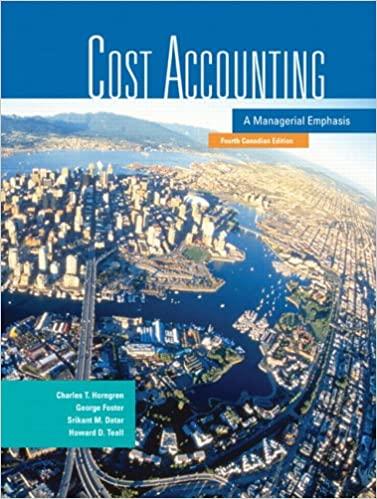Joint cost allocation, process further. The Sinclair Refining Company (SRC) is a 100%-owned subsidiary ofSinclair Oil &
Question:
Joint cost allocation, process further. The Sinclair Refining Company (SRC) is a 100%-owned subsidiary ofSinclair Oil & Gas. SRC operates a refinery that processes hydrocarbons sold to it by the Sinclair Production Company, another 100%-owned subsidiary of Sinclair Oil & Gas. SRC’s refinery has three outputs from its processing ofhydrocarbons—crude oil, natural gas liquids, and gas. The first two outputs are liquids, while gas is a vapour. However, gas can be expressed as a liquid equivalent using a standard industry conversion factor. For costing purposes, $RC assumes all three outputs are jointly produced until a single splitoff point where each output separately appears and is then further processed individually.
For August 2007, the following data (in millions) apply:
Crude oil: 150 barrels produced and sold at $21.60 per barrel. $eparable costs beyond the splitoff point are $210.
Natural gas liquids: 50 barrels produced and sold at $18 per barrel. $eparable costs beyond the splitoff point are $126.
Gas: 800 equivalent barrels produced and sold at $1.56 per equivalent barrel. $eparable costs beyond the splitoff point are $252.
$RC paid the $inclair Production Company $1,680 for hydrocarbons delivered to it from its offshore platform in August 2007. The cost ofoperating the refinery in August up to the splitoff point was $480, including $120 of gas charges from Deadhorse Utilities, an independent utility company. Deadhorse signed a long-term contract with $RC several years ago when gas prices were much lower than in 2007.
A new federal law has recently been passed that taxes crude oil at 30% of operating income. No new tax is to be paid on natural gas liquid or natural gas. $tarting in August 2007,
$RC must report a separate product line income statement for crude oil. One challenge facing
$RC is how to allocate the joint cost of producing the three separate salable outputs. Assume no beginning or ending inventory.
Required 1. Draw an exhibit showing the joint cost situation for $RC.
2. Allocate the August 2007 joint cost among the three salable products using
(a) the physical measures method and
(b) the estimated NRV method. Compute the operating income for each product using each of these methods.
3. Discuss the pros and cons of each method for $inclair product emphasis decisions.
Step by Step Answer:

Cost Accounting A Managerial Emphasis
ISBN: 9780131971905
4th Canadian Edition
Authors: Charles T. Horngren, George Foster, Srikant M. Datar, Howard D. Teall




